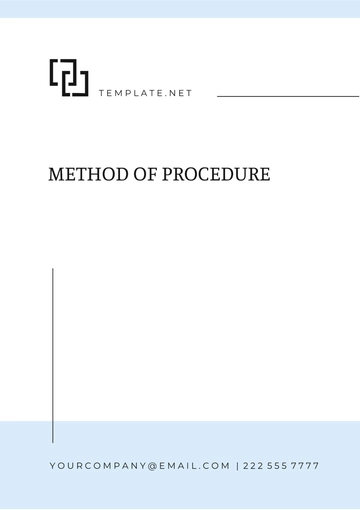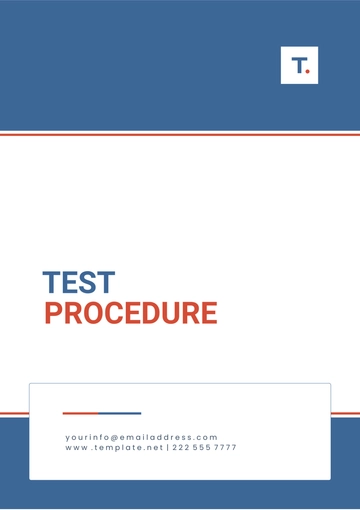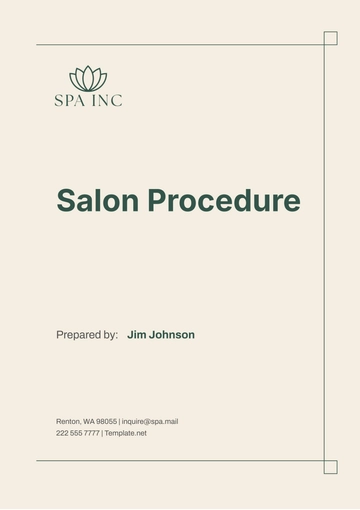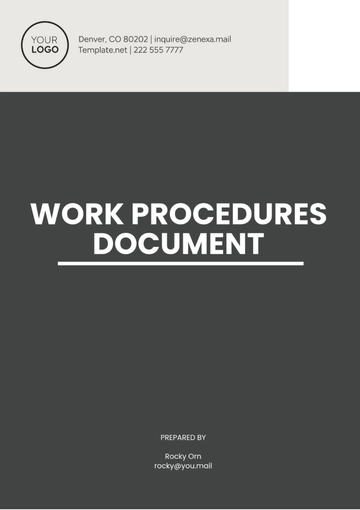Free Restaurant Safety Training Procedure
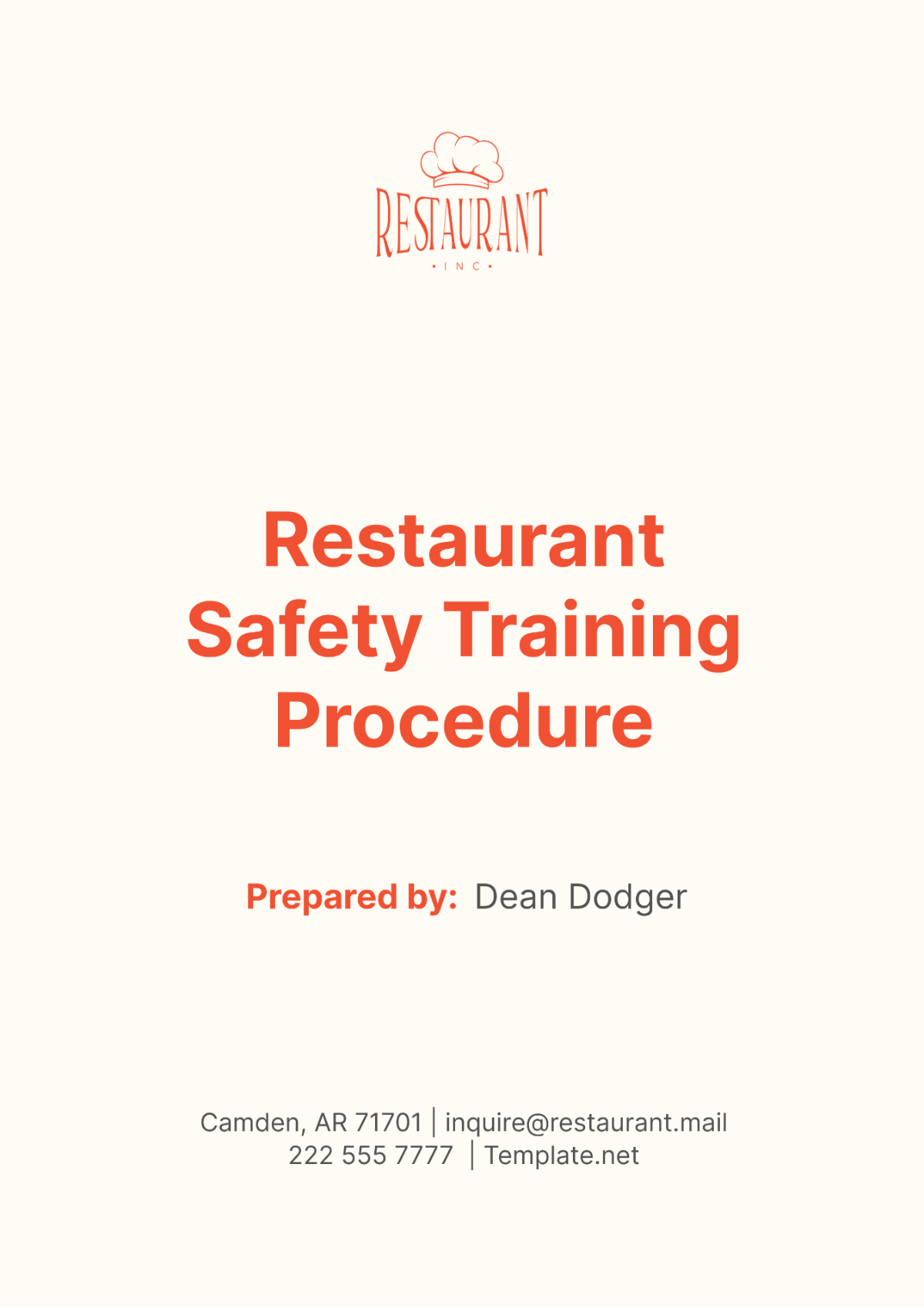
I. Purpose
The purpose of this Restaurant Safety Training Procedure is to ensure that all employees at [Your Company Name] are well-informed and compliant with safety standards to prevent accidents and health hazards in the restaurant. This procedure aims to provide comprehensive safety training that promotes a safe working environment for all staff members. By equipping employees with the necessary knowledge and skills, we strive to minimize risks and create a culture of safety that benefits both staff and patrons.
Additionally, this procedure aims to meet all relevant federal, state, and local regulations, ensuring [Your Company Name] remains compliant with US safety laws and standards. Through regular training sessions, assessments, and updates to safety protocols, we commit to maintaining a proactive approach to workplace safety, fostering an environment where safety is everyone's responsibility.4o
II. Scope
This procedure applies to all employees at [Your Company Name], including but not limited to kitchen staff, waitstaff, management, and the cleaning crew. It encompasses all roles and responsibilities within the restaurant, ensuring that every team member understands and adheres to safety protocols. This comprehensive approach guarantees that safety measures are consistently applied throughout all operations, from food preparation and service to facility maintenance and sanitation. By including all employees, we aim to create a unified commitment to safety and health standards across the entire organization.
III. Responsibilities
The responsibilities outlined in this section ensure that all employees at [Your Company Name] receive adequate safety training and that compliance with safety procedures is consistently monitored. Different roles within the organization have specific duties to facilitate the implementation and maintenance of safety standards. The table below details the key responsibilities assigned to each job title, ensuring clear accountability and effective management of the restaurant's safety training program.
Job Title | Responsibilities |
|---|---|
General Manager |
|
Assistant Manager |
|
Head Chef |
|
Floor Supervisor |
|
IV. Procedure
Ensuring the safety of both employees and patrons at [Your Company Name] requires a thorough and continuous training program. The following procedures outline the steps for initial and ongoing safety training. These measures are designed to prevent accidents, promote a safe working environment, and maintain compliance with all relevant safety regulations.
A. Initial Safety Training
New hires must attend a mandatory safety orientation session within their first week. This training is essential to ensure that all employees understand and adhere to safety protocols from the start. The orientation session will cover the following topics:
Emergency Evacuation Procedures
Proper Use of Kitchen Equipment
Personal Hygiene Standards
Fire Safety Measures
Hazardous Material Handling
The General Manager will provide training materials, including written documents and videos. Employees must complete a safety quiz to demonstrate their understanding of the material, ensuring they are prepared to maintain a safe working environment.
B. Ongoing Safety Training
Ongoing safety training is crucial for reinforcing safety standards and addressing new risks. The training program includes the following components:
Monthly Safety Meetings: These meetings will review any incidents that occurred, discuss potential improvements, and reinforce the importance of safety protocols. Employees are encouraged to voice any safety concerns or suggestions.
Quarterly Refresher Courses: Focused on critical safety topics, these courses will ensure that employees stay updated on best practices and any changes to safety procedures. Topics may include updates on fire safety, kitchen equipment use, and personal hygiene standards.
Annual Comprehensive Safety Training: A thorough review of all safety protocols and procedures will be conducted annually for all employees. This training will cover emergency evacuation, kitchen equipment use, personal hygiene, fire safety, and hazardous material handling in detail. Employees will be required to pass a comprehensive safety assessment to ensure their continued competence in maintaining a safe workplace.
V. Record Keeping
Effective record keeping is crucial for maintaining compliance with safety standards and ensuring a transparent training process at [Your Company Name]. Proper documentation of training sessions and incidents helps in monitoring safety protocols and making necessary improvements. The following practices outline the requirements for maintaining comprehensive safety training records and incident reports.
Maintain a log of all training sessions, including dates, attendees, and topics covered.
Store Incident Report Forms securely.
Keep records for at least five years.
VI. Training Materials
To ensure thorough and effective safety training at [Your Company Name], a variety of documents and multimedia resources are utilized. These materials provide comprehensive guidance on safety protocols and procedures, enhancing the understanding and retention of crucial safety information among employees. The following resources should be referenced during all training sessions:
Employee Safety Handbook
Safety Training Videos
Emergency Procedures Manual
VII. Checklist for Safety Training Sessions
Ensuring the effectiveness of safety training sessions at [Your Company Name] involves meticulous planning and execution. Below are the essential steps to organize and conduct successful safety training sessions.
Schedule Training Session ↓ Prepare Training Materials ↓ Notify Employees ↓ Conduct Training ↓ Collect Feedback ↓ Update Training Log |
|---|
Schedule Training Session
Plan training sessions in advance, ensuring they fit into employees’ schedules without disrupting restaurant operations. Establish a regular training calendar to maintain consistency.
Prepare Training Materials
Gather all necessary materials, including the Employee Safety Handbook, Safety Training Videos, and Emergency Procedures Manual. Ensure that materials are up-to-date and relevant to current safety standards and practices.
Notify Employees
Inform all relevant staff members about the upcoming training session. Provide details such as the date, time, location, and topics to be covered. Use multiple communication channels to ensure everyone is aware.
Conduct Training
Facilitate the training session, covering all planned topics thoroughly. Engage employees through interactive methods such as discussions, demonstrations, and practical exercises to reinforce learning.
Collect Feedback
After the session, gather feedback from participants to evaluate the effectiveness of the training. Use surveys or open discussions to identify areas for improvement and address any concerns.
Update Training Log
Record details of the training session, including the date, attendees, and topics covered. Maintain this log to track training progress and ensure compliance with safety standards.
- 100% Customizable, free editor
- Access 1 Million+ Templates, photo’s & graphics
- Download or share as a template
- Click and replace photos, graphics, text, backgrounds
- Resize, crop, AI write & more
- Access advanced editor
Introducing Template.net's Restaurant Safety Training Procedure Template – your essential guide for training staff in maintaining a safe work environment in the food service industry. This editable and customizable template ensures clarity and compliance with safety regulations. Tailored for effectiveness, it's editable in our Ai Editor Tool, offering seamless customization. Enhance your restaurant's safety standards with a comprehensive training procedure that covers safety protocols, emergency response, and best practices for a secure and healthy workplace.



